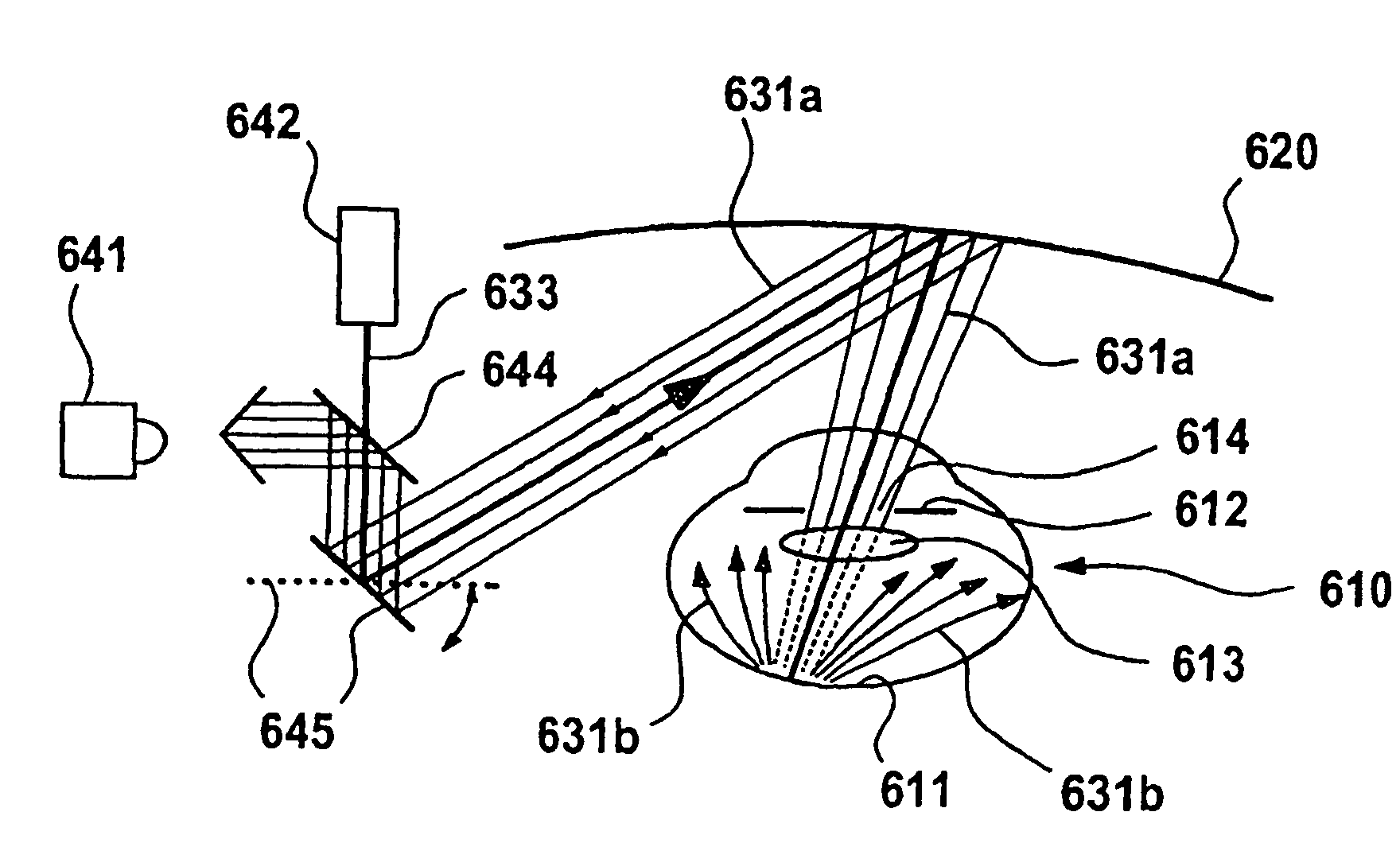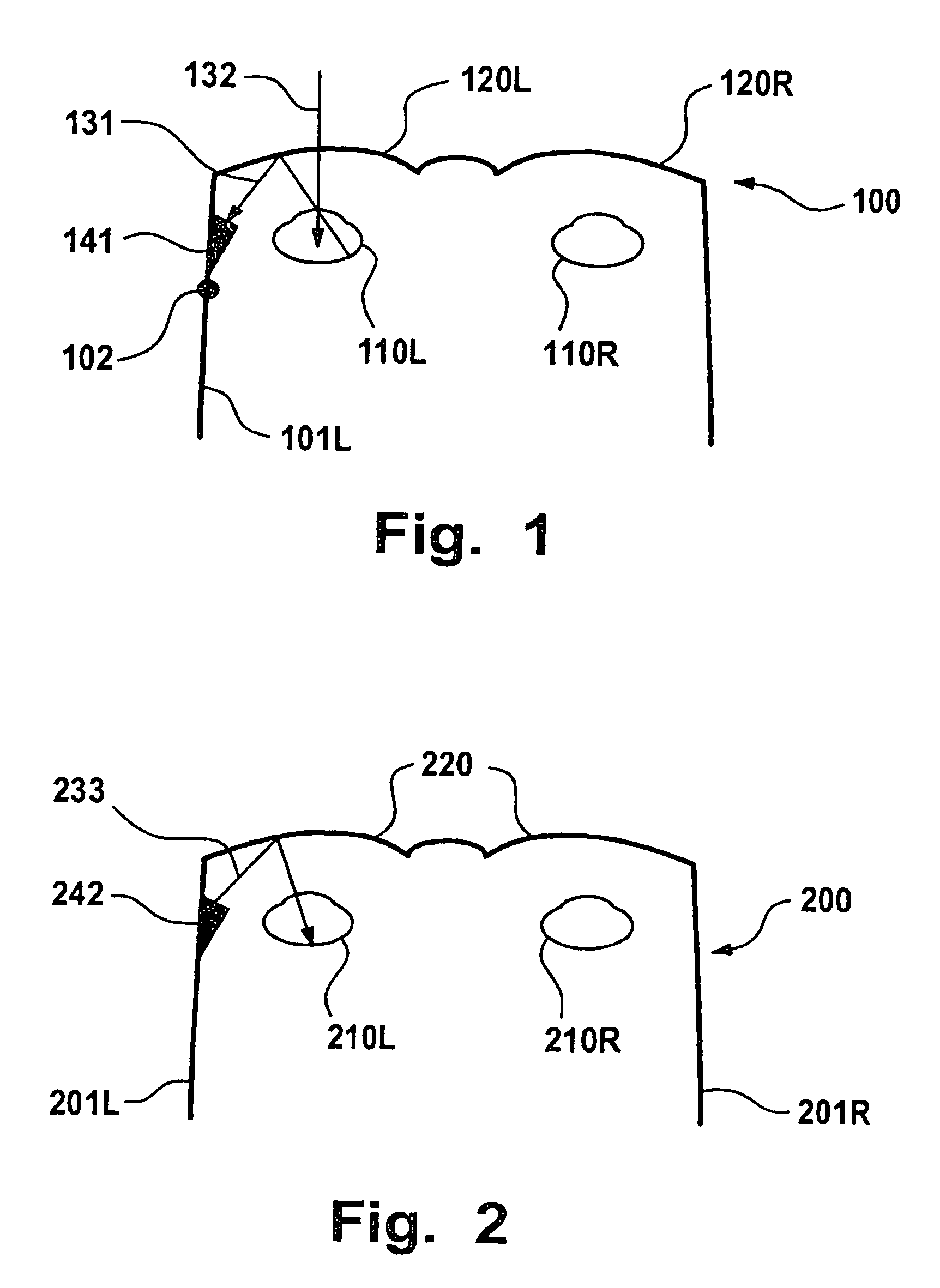Information system and method for providing information using a holographic element
a technology which is applied in the field of information system and holographic element providing information, can solve the problems of cumbersome shape, difficult to implement such a system or method so cost-effectively, and disadvantage of cumbersome shap
- Summary
- Abstract
- Description
- Claims
- Application Information
AI Technical Summary
Benefits of technology
Problems solved by technology
Method used
Image
Examples
first embodiment
[0300]FIG. 1 is a schematic representation of a scanning information system 100 according to the invention, in which the scanning information system 100 is designed in the shape of spectacles 100 that have two holographic elements 120R, 120L in the form of spectacle lenses 120R, 120L arranged in front of each 110R, 110L. On the left bow 101L of the spectacles 100, a scanning device 141 is fastened which is capable of detecting light beams 131 coming from the eye 110. The scanning device 141 preferably comprises a light guiding device (not shown) such as a scanner device, which determines the momentary detection direction of the scanning device 141 and changes time, according to a predetermined scan pattern. Naturally, an additional scanning device (not shown) could also be fastened on the right bow 101R. The light beam 132 indicates that light beams 132 originating from the environment are allowed to pass unhindered by the holographic element 120.
[0301]In this embodiment, the hologr...
second embodiment
[0303]FIG. 2 is a schematic representation of a projecting information system 200 in which the projecting information system 200 is designed in the form of spectacles 200 having two holographic elements 220 constructed as spectacle lenses 220 each arranged in front of an eye 210. On the left bow 201 L of the spectacles 200, a projection device 242 is fastened which is capable of projecting light beams 233 onto or into the eye 210. The projection device 242 preferably comprises a light guiding device(not shown), for example, a scanner device which determines the momentary projecting direction of the projection device 242 and changes it with respect to time according to a predetermined projection pattern. Naturally, an additional projection device, which is not shown, could also be fastened on the right bow 201R.
[0304]In this embodiment, the holographic element 220 is used only for refracting light beams 233 projected by the projection device 242 in the direction of the eye 210. The ...
third embodiment
[0305]FIG. 3 is a schematic representation of an information system 300 in which the information system 300 is designed in the form of spectacles 300, with two holographic elements 320 designed as spectacle lenses 320 which are each arranged in front of an eye 310. At the left bow 201L of the spectacles 200, a combined projection and scanning device 343 is fastened, which is capable of projecting light beams 333 onto or into the eye 320 as well as also detecting light beams 331 coming from the eye 310. The projection device 343 preferably comprises a light guiding device (not shown), such as a scanner device, which projects the momentary projecting direction of the projection device 343 and changes it with respect to time according to a predetermined projection pattern.
[0306]Such an information system 300 could be used, for example, for illuminating the retina of the eye 310 in an actively point-focal manner, and to detect the light 331 reflected in by the retina for the purpose of...
PUM
 Login to View More
Login to View More Abstract
Description
Claims
Application Information
 Login to View More
Login to View More - R&D
- Intellectual Property
- Life Sciences
- Materials
- Tech Scout
- Unparalleled Data Quality
- Higher Quality Content
- 60% Fewer Hallucinations
Browse by: Latest US Patents, China's latest patents, Technical Efficacy Thesaurus, Application Domain, Technology Topic, Popular Technical Reports.
© 2025 PatSnap. All rights reserved.Legal|Privacy policy|Modern Slavery Act Transparency Statement|Sitemap|About US| Contact US: help@patsnap.com



